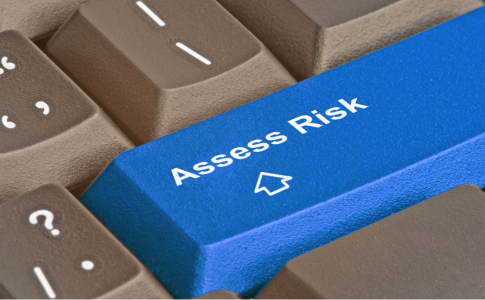Last updated: October 24, 2025
Data breaches and cyberattacks are no longer merely IT problems. They can disrupt operations, cause financial losses, and damage your reputation. What’s more, data compromises can introduce a raft of legal and data privacy implications.
Yet, many small and medium-sized businesses aren’t sure if their networks are secure enough. While some believe they are, they lack a clear benchmark to confirm it. The best way to gauge if you’re investing enough in cybersecurity is to do a security risk assessment.
What Is a Security Risk Assessment?
Security risk assessment is the process of identifying and evaluating potential threats and vulnerabilities that could compromise business assets, data, or systems. It helps you view your business’s technology from an attacker’s perspective so that you can make informed decisions about security measures.
A thorough cybersecurity risk assessment can help you:
- Pinpoint your most valuable tech assets to prioritize security measures and allocate resources effectively
- Understand the risks and their potential impact on your business
- Identify gaps in your IT infrastructure before threat actors can exploit them
- Remain compliant with security regulations such as HIPAA, GDPR, and SOC 2
The 5 Biggest Security Risks for Small Businesses
If you’re like other small business owners, it’s easy to think your business is too small to be targeted by malicious actors. But that’s far from the truth. In fact, 58% of small businesses experienced a cyber attack in 2024, and without a cybersecurity plan, they risk going out of business.
To protect your business, watch out for these top five risks in your small business risk assessment.
Phishing Attacks
With over 8 billion spam messages sent daily in the U.S., cybercriminals are finding ways to infiltrate small businesses through phishing scams. In these attacks, malicious actors send you or your employee(s) an email or text pretending to be an entity you trust to steal personal information. The aim is to gain access to your company’s bank account, email, network, or social media to execute fraudulent activities.
Malware and Ransomware
In 2024, 88% of businesses experienced successful ransomware attacks. Ransomware is malware that allows cybercriminals to take over files, systems, and even devices, blocking access until a ransom is paid.
Weak Passwords
Unfortunately, many small and medium-sized businesses and their employees use default passwords provided, reused passwords, or weak passwords. These unsafe password practices create vulnerabilities that hackers can exploit using brute force, credential stuffing, phishing, man-in-the-middle, or keylogging.
Insider Threats
Not all cyber threats originate from external sources. Employees or other parties with legitimate access to your system and data can unintentionally or maliciously compromise security. Often, insider threats lead to data breaches.
Insufficient Cybersecurity Preparedness
Despite being aware of cyber threats, many businesses are underprepared. Only 23% feel very confident in their ability to handle a cyber attack, and 83% aren’t financially ready to recover from the damages of such an event.
Step-By-Step Guide To Conducting a Security Risk Assessment
Security risk assessment stands as a cornerstone in preventing cyber attacks and demands a structured and meticulous approach to ensure effectiveness.
1. Identify Assets and Sensitive Data
Determine which business assets, systems, and data are most lucrative to hackers and need protection.
2. Recognize Potential Threats
Map cyber threats, physical risks, and other vulnerabilities that could compromise your security.
3. Evaluate Existing Security Controls
Assess how effective your current security measures are in identifying gaps and weaknesses.
4. Prioritize Risks
Rank risks based on potential impact and likelihood to help you focus on the most critical threats.
5. Implement Risk Mitigation Strategies
Based on your findings, develop and apply security measures, policies, and controls to reduce risk and enhance protection.
Who Should Handle Security Risk Assessment in an SMB?
Whether you run the security risk assessment internally or externally depends on your expertise, resources, and security needs. Consider the following factors when making your decision:
| Factor | Internal Security Risk Assessment | External Security Risk Assessment |
| Cost | Lower cost as you’ll utilize the in-house resources | Higher cost as you’ll hire external experts |
| Expertise | Limited expertise, depending on internal IT knowledge | Highly specialized cybersecurity knowledge |
| Time commitment | Time-consuming, diverts focus from core operations | Faster, conducted by dedicated professionals |
| Compliance and best practices | Limited understanding of compliance requirements | Ensures regulatory compliance and industry best practices |
| Security gaps and threat awareness | Limited exposure to evolving threats | Up-to-date on the latest attack methods and vulnerabilities |
Best Tools and Services To Simplify Risk Assessments
At Trava Security, we offer comprehensive tools and services to simplify risk assessments for your business. Our cybersecurity solution can help you run automated assessments that scan all the technical environments to help you identify potential vulnerabilities. We’ll also help you assess compliance with various regulatory frameworks, such as ISO 27001, SOC 2, GDPR, and more, to strengthen your security. Book an intro call today to learn how our risk assessment service can help keep your business secure and resilient.


